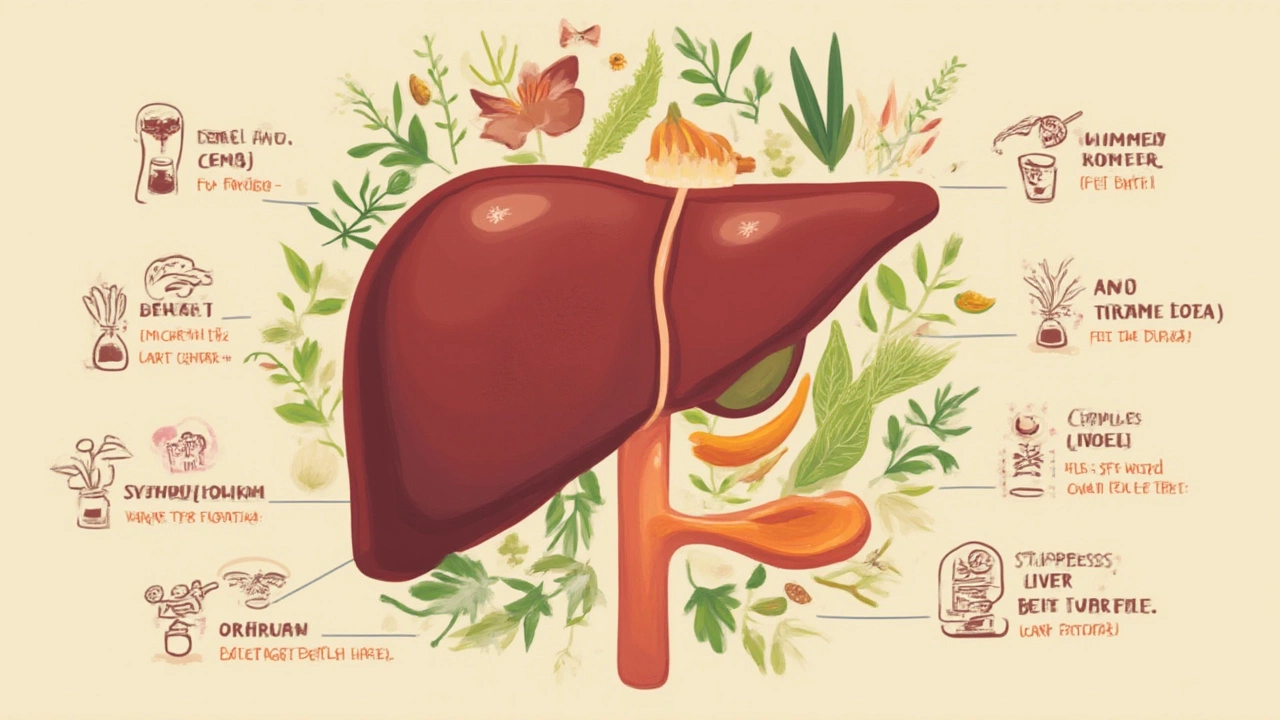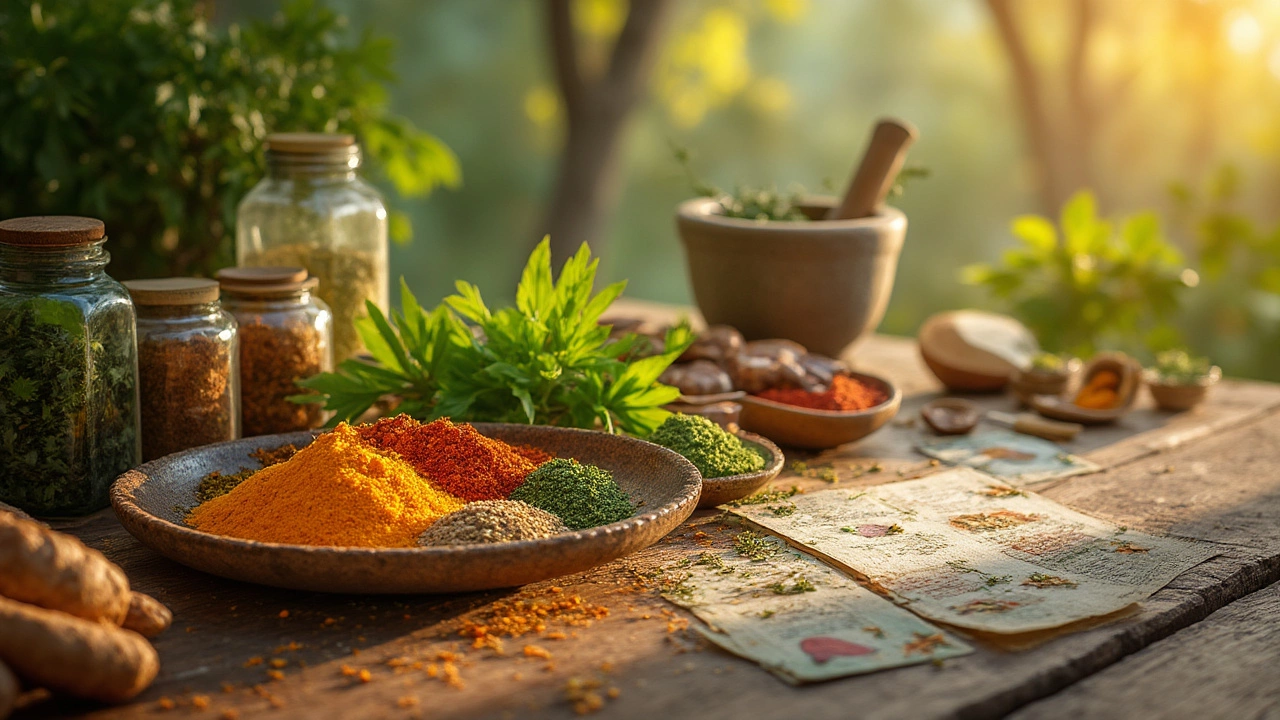If you’ve ever wondered if there’s a shortcut to healing your liver after years of weekend beers, greasy takeout, or just life's chaos, you’re not alone. Hidden in everyone’s kitchen cupboard or local health shop are humble herbs with some serious liver-healing potential. While the spotlight usually goes to the harsh cleanses and strict detox diets, it’s the old-school herbal remedies that have the loyal fanbase—and a growing pile of research backing their benefits.
How the Liver Repairs Itself—And Why It Sometimes Fails
The liver is a powerhouse that works overtime, filtering out toxins from everything we eat, drink, and even breathe. It’s got a cool trick up its sleeve: it can regenerate. Lose up to 75% of your liver, and with the right conditions, it can grow right back. That’s not science fiction; it’s verified biology. Ancient Egyptians were even familiar with this. But just because it’s resilient doesn’t mean it’s invincible. Pile on too much alcohol, sugar, fried food, or certain medications, and that overworked organ starts slowing down. You might not notice it right away; the first signs are sneaky—always feeling tired, slight yellowing of the eyes, unexplained nausea, or changes in your poop. These symptoms can be so mild that most people brush them off. But here’s the thing: continuous damage tips the balance, and suddenly, the liver’s self-healing powers can’t keep up.
It’s not all doom and gloom, though. There’s a field of research pouring out studies on how certain compounds help the liver bounce back. The key player here? Silymarin. This bioactive compound, found in milk thistle, shields liver cells from further damage, helps them regenerate faster, and may even flush out some toxins. The evidence is so convincing that some European countries use silymarin extracts as an official treatment for toxic mushroom poisoning, which absolutely trashes the liver within hours.
Besides silymarin, other herbal compounds like curcumin (from turmeric), glycyrrhizin (from licorice root), and andrographolide (from Andrographis paniculata) are under the microscope for their liver-protective effects. Sure, the body can do a lot on its own, but a little plant-based backup goes a long way, especially when lifestyle changes like cutting out alcohol or processed foods come into play. That’s why looking at herbal therapies isn’t just an “alternative” idea—it’s mainstream science now catching up with what traditional healers have said for ages.

Milk Thistle: The Champion Herb for Liver Repair
Mention liver repair, and the conversation always circles back to milk thistle. This thorny purple flower has been the go-to for the liver since ancient Greece. The main active ingredient, silymarin, isn’t just a buzzword—there’s real solid research behind it. A 2021 multi-nation clinical trial showed that people with alcohol-related liver damage who took milk thistle capsules daily had healthier liver enzyme levels and reported less fatigue. The study didn't just measure numbers; participants actually felt better.
How does silymarin work its magic? It acts as an antioxidant, neutralizing the free radicals that can cause cellular damage. It stabilizes cell walls in the liver, keeping out toxins, and ramps up the production of proteins that the liver uses to reconstruct its own tissue. In animal experiments, silymarin has even reversed early-stage liver fibrosis—the precursor to cirrhosis. Don’t take that as permission to keep living wild, though. The more damage you inflict, the less any herb can do. Still, if you’re doing your part—eating better, moving more, drinking less—milk thistle is like sending in a cleanup crew after a backyard barbecue.
Here’s a fun fact: in some European countries, especially Germany, doctors actually prescribe silymarin for liver disorders, and you’ll find it in nearly every pharmacy. Australians, too, have warmed up to the stuff, partly because our lifestyle (think beachside BBQs and cold beers) isn’t exactly liver-friendly. You’ll find it in capsules, teas, and even powders you can blend into smoothies. The taste isn’t exactly winning any flavor awards—think of it as medicine, not dessert. But the best part? No major side effects, apart from mild stomach discomfort in some folks, usually if they go overboard with large doses.
If you’re considering giving milk thistle a go, look for reputable brands—cheaper supplements may skimp on silymarin content or use low-grade powder. Most studies use around 200–400 mg per day. And here’s a tip: if you have pre-existing conditions (especially hormone-related cancers), talk to a healthcare professional since the herb can play around with hormone levels a bit. For most otherwise healthy adults, though, milk thistle is a safe bet with centuries of history on its side.
But don’t stop at just one herb. Drinkers, diabetics, and anyone who’s popped more than a few paracetamol for hangovers can benefit from combining milk thistle with other liver-friendly plants. Enter turmeric, another kitchen staple that’s been punching above its weight when it comes to organ repair.

Other Liver-Loving Herbs and Tips You Can Use Daily
Turmeric’s active ingredient, curcumin, is a golden-yellow compound known for squashing inflammation. In practical terms, this means it helps dial down the immune system’s “attack mode,” so liver tissue has a chance to recover instead of staying in a constant state of battle. Lab studies (like one out of the University of Sydney, right here) reveal curcumin’s ability to curb the scarring process, especially in cases of fatty liver disease. You don’t even need to go hunting for rare supplements: stirring turmeric powder into your food or warm almond milk gives you a hit of curcumin every time.
Licorice root adds another layer of defense. The sweet taste comes from glycyrrhizin, a molecule shown to protect against chemically induced liver injuries. In Japan, glycyrrhizin is part of the official “chronic hepatitis” treatment toolkit. The catch? Too much can raise blood pressure, so moderation is key. Try it in teas, not candy, since those are pumped with sugar and artificial stuff.
Andrographis paniculata, less known outside Asia, holds its own with andrographolide. Unlike milk thistle and turmeric, this one acts more as a fire extinguisher for viral hepatitis flare-ups. Some studies suggest it can slow down the progression to cirrhosis, making it a favourite in Ayurvedic and Chinese medicine circles. If you’re poking around health food shops in Sydney’s Chinatown or the Indian quarter, you’ll spot it bottled as tablets or teas—just make sure you’re buying standardized extracts, as wild-harvested varieties vary a lot in strength.
You don’t have to rely on supplements alone. Here are some daily habits that team up nicely with these herbs:
- Drink enough water—your liver needs it to flush out toxins efficiently.
- Swap sugary snacks for fresh fruit. The liver loves antioxidants and vitamin C.
- Ease up on the alcohol; even a few drink-free days each week make a big difference.
- Include beans, leafy greens, and cruciferous veggies like broccoli and cauliflower; these pack sulphur compounds that rev up the liver’s detox skills.
- Keep medications in check. Overusing common painkillers like paracetamol or NSAIDs puts the liver under strain.
Now, before you launch into full herb-hero mode, one warning: herbs aren’t a magic wand. They support, but don’t replace, medical treatment—especially if you’ve got hepatitis, cirrhosis, or fatty liver disease. Track your progress with regular blood tests, and use herbs as part of a wider strategy with diet, exercise, and less booze. Your body (and your liver) will thank you.
The real headline here: the right herbs, especially milk thistle, have proven, science-backed value when it comes to helping your liver heal and repair. Combine them with sensible choices, keep tabs on your health, and you’ll give your liver the best possible shot at bouncing back—even if you’ve been a little too hard on it lately. And isn’t that the kind of hope we could all use after a late-night kebab and a few too many cold ones?
